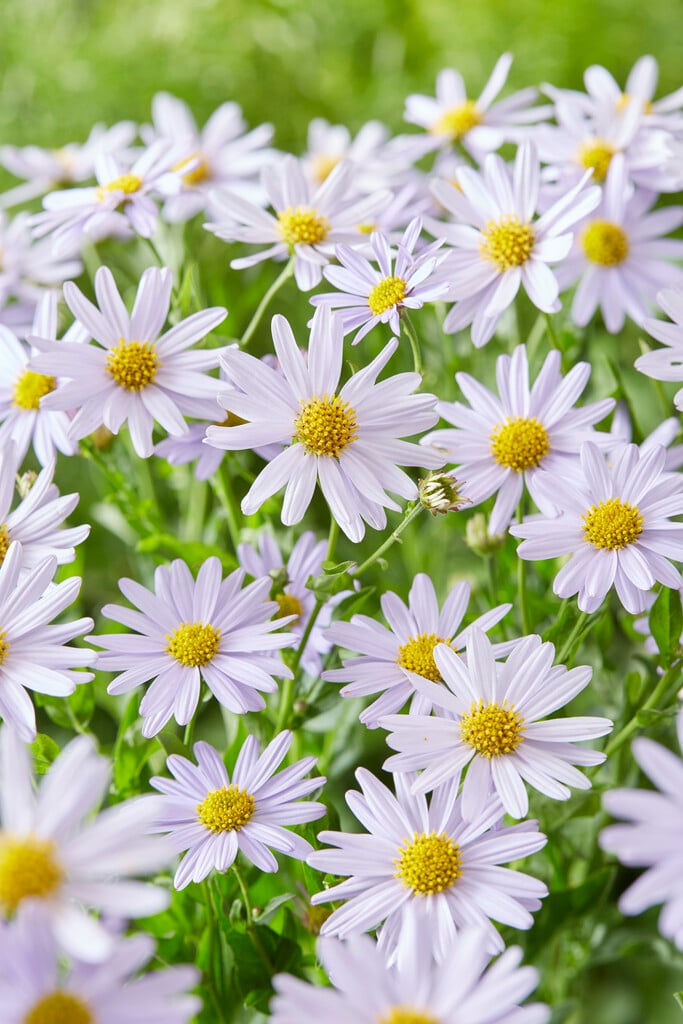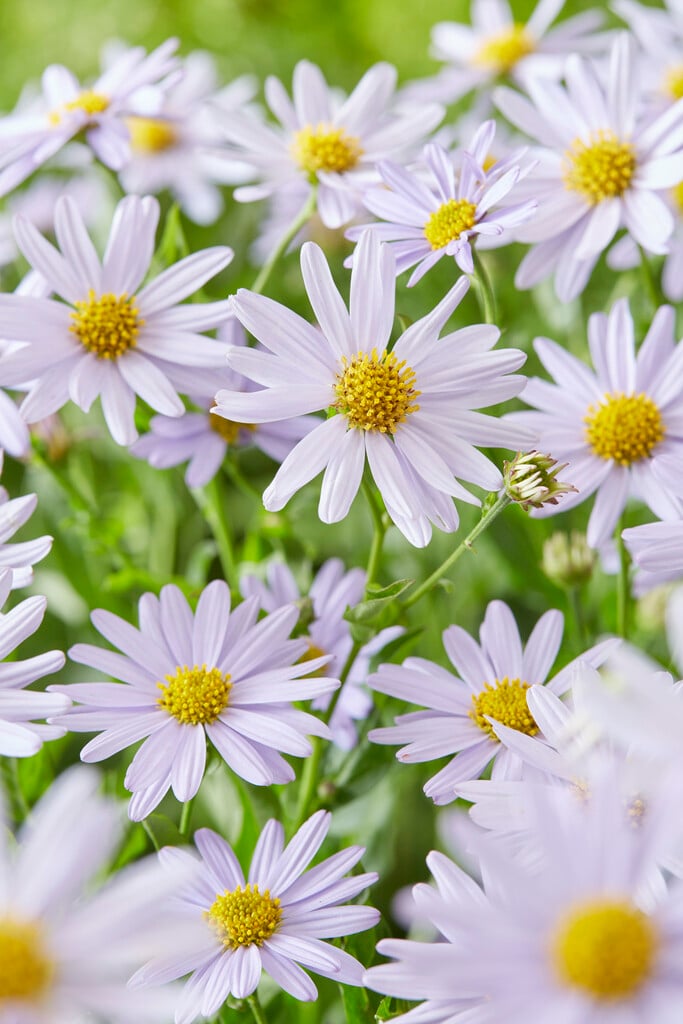Kalimeris incisa
A clump-forming perennial about 1m or more tall, producing leafy, branching stems bearing very pale purple or white daisy-like flowerheads to 4cm across, with golden yellow or greenish-yellow centres, appearing over a long period from early summer to autumn
Size
Ultimate height
1–1.5 metresTime to ultimate height
2–5 yearsUltimate spread
0.5–1 metresGrowing conditions
Moisture
Moist but well–drainedpH
Acid, Alkaline, NeutralColour & scent
| Stem | Flower | Foliage | Fruit | |
| Spring | Green | |||
|---|---|---|---|---|
| Summer | Purple White | Green | ||
| Autumn | Purple White | Green | ||
| Winter |
Position
- Full sun
- Partial shade
Aspect
East–facing or South–facing or West–facing
Exposure
Exposed or Sheltered Hardiness
H7Botanical details
- Family
- Asteraceae
- Native to GB / Ireland
- No
- Foliage
- Deciduous
- Habit
- Clump forming
- Genus
Kalimeris are deciduous perennials with smooth, narrow, rounded, toothed or lobed leaves. The daisy-like flowers have white, pink or purple ray florets and yellow centres, and are carried singly or in flat-topped clusters
- Name status
Unresolved
How to grow
Cultivation
Grow in moderately fertile, moist but well-drained soil in full sun or light shade. See aster cultivation
Propagation
Propagate by division in spring or root softwood basal cuttings in spring; division can be carried out every third year to maintain vigour
Suggested planting locations and garden types
- City and courtyard gardens
- Coastal
- Cottage and informal garden
- Patio and container plants
- Wildflower meadow
- Cut flowers
- Flower borders and beds
Pruning
Cut stems close to the ground in late autumn
Pests
May be susceptible to leaf and bud eelworms, slugs and snails
Diseases
May be susceptible to Verticillium wilt, Powdery mildews and grey moulds
Get involved
The Royal Horticultural Society is the UK’s leading gardening charity. We aim to enrich everyone’s life through plants, and make the UK a greener and more beautiful place.

